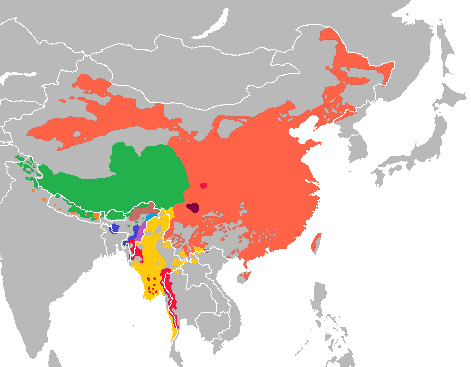The language shows how ancient people moved across China and Asia.

With over 1.5 billion speakers, the Sino-Tibetan language family is the second largest language group, after the Indo-European one. The origins of this family have long been debated, with two main theories emerging: one that it originated in China around 4,000-6,000 years ago, and another which places the origin in northern India, around 9,000 years ago. Now, a new study analyzing data from genetics, computational biology, linguistics, agriculture, archaeology, and anthropology might finally settle that debate.
There are over 400 languages in the Sino-Tibetan family, including varieties of Chinese, Burmese, Tibetan, and many others. Li Jin and colleagues conducted a statistical analysis of root-meanings for words in a lexicon of 109 of the most common Sino-Tibetan languages. They then tried to calculate, based on common word occurrences, what the first origin of the words was. Randy Lapolla, a professor of linguistics at Nanyang Technological University, explains this approach in a commentary:
“Historical linguists seek to determine the relationships between languages, and usually take an approach called the comparative method. They look for cognate words in different languages — words that have similar meanings and that can be shown to have a shared origin in a word from an earlier, ancestral language,” Lapolla explains.
“Linguists then try to explain why the words often don’t look exactly alike: the changes that the sounds went through, what additions were made to the words, and what to the words being used, in some cases, for different meanings in related languages. For example, work in Indo-European linguistics has determined that the English word cow and the French word boeuf are part of a family of cognate words that have descended from a reconstructed Proto-Indo-European root word, *gwou- (the asterisk indicates a reconstructed form and the hyphen that it is a root that formed a number of different words).”
The results indicate that the languages split from a common ancestor around 5,900 years ago in northern China. Together with other archaeological and genetic data, their work also suggests that the split happened at a time when one group of people migrated west into Tibet and south into Myanmar, and another group of people moved east- and southward, ultimately becoming the Han Chinese. The languages spread around with agricultural practices and other cultural traits.
The Sino-Tibetan language history hasn’t been as studied as the Indo-European one, and there is much more uncertainty about its emergence and evolution. The work is significant in more ways than one, as it also provides a way to connect archaeological and anthropological findings under a common umbrella, helping to settle a long-lasting debate.
The study was published in Nature.


